Precision Farming Solutions: Unlocking the Future of Agriculture
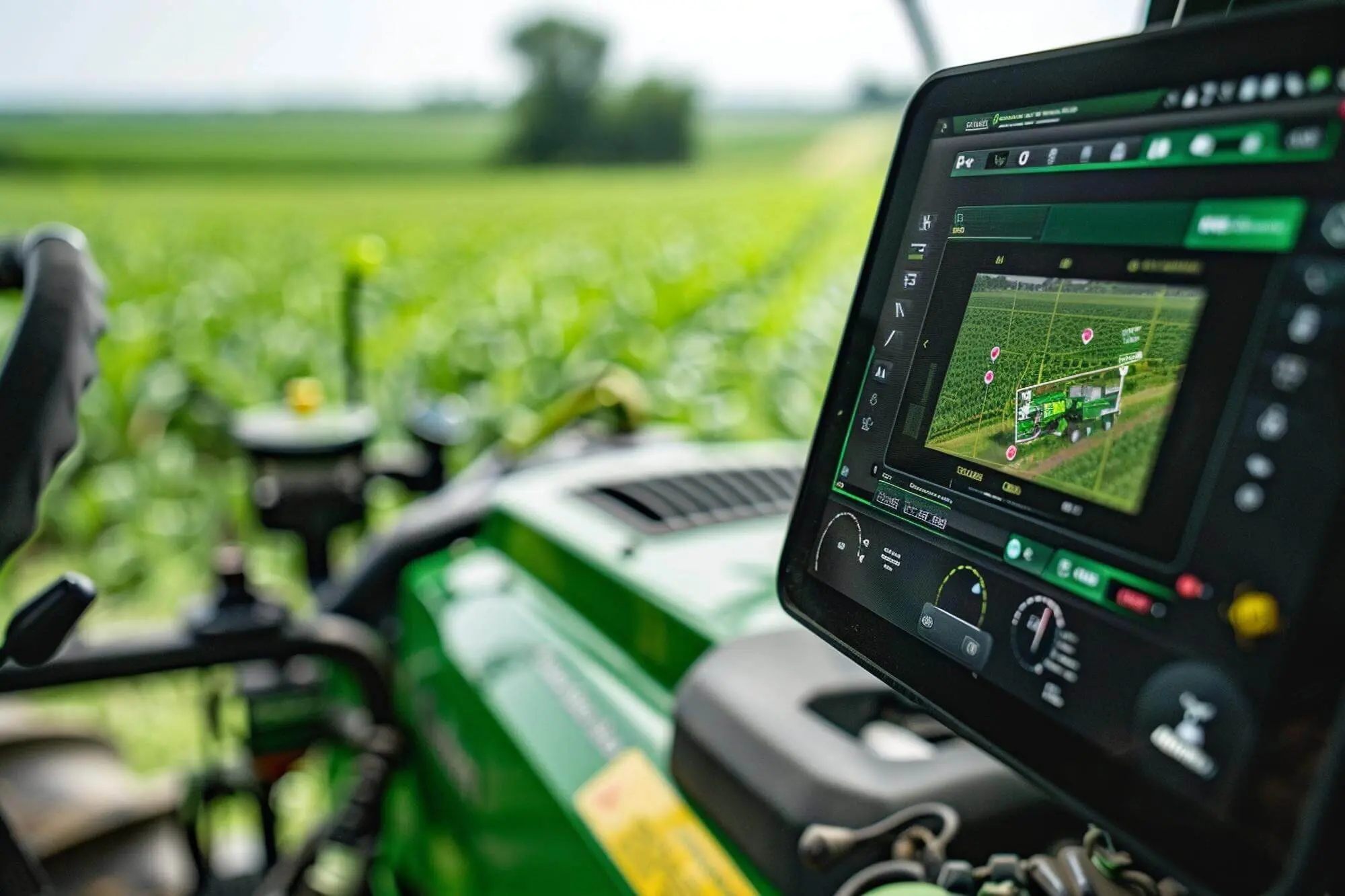
For generations, farmers have followed time-honored techniques to cultivate their land and produce food for generations. Their instincts and wisdom passed down through the years are valuable, but the modern world presents new challenges that can’t be solved in the old ways. For example, feeding the global population that grows at almost 1% each year in a sustainable way is quite a challenge. Not to mention some relatively minor issues like unpredictable climate conditions and soil degradation. In this regard, precision farming solutions can be a green lifeline that will help meet modern demands. .
But what is it, and what is it eaten with? Relevant experts will explain it to you in this guide, relying on our ten years of experience delivering agriculture software development solutions. We’ll go into detail on how precision agriculture technology works, specific solutions, and the benefits and challenges of this more precise approach to cultivation. So, you want to revamp your agricultural operations? Learn how below.
What is Precision Farming?
Before we can move any further, we need first to clarify what is precision agriculture and how it differs from traditional farming.
So precision farming, also known as precision ag, is a popular, modern-day growing method that uses technology to apply the necessary resources in the required amount when they are needed. It uses a combination of state-of-the-art technologies that help make precise decisions about the particular needs of the crops and the specific conditions of the different soil types. Precision agriculture examples include the use of GPS-guided tractors, soil sensors, and drones to monitor fields and apply crop inputs with high accuracy.
The main difference between precision farming solutions and conventional ones is, well, it’s evident even from the name – precision. The traditional way of growing plants depends on general, one-size-fits-all practices, which treat large swathes of land with the same amount of water, fertilizer, and pesticides. While this approach has fed the world for centuries, overuse of resources and inconsistent crop yields have become pressing concerns that call for more sustainable methods.
Precision agriculture, on the other hand, operates on a micro level with laser precision. It collects and processes data to calculate and deliver just the right amount of water, fertilizers, and pesticides to each plant at the right time. Technology is the key enabler of high precision in agriculture. Without it, the detailed level of control and accuracy that defines this approach wouldn’t be possible. From drones that can survey your fields from above to sensors that monitor soil moisture, pH levels, and nutrient content, precision agriculture technologies are the eyes, ears, and brains of smart farms.
The difference in results is dramatic—higher yields, healthier crops, and a much smaller environmental impact.
| Feature | Precision Agriculture | Traditional Agriculture |
| Approach | Data-driven and site-specific | General and uniform |
| Resource Management | Optimized and tailored | Less efficient and wasteful |
| Decision Making | Informed by data and technology | Based on experience and intuition |
| Technology Use | Extensive (GPS, sensors, drones) | Minimal |
| Efficiency | Higher | Lower |
| Sustainability | More sustainable practices (reduced pesticide and fertilizer use, water conservation) | Less sustainable practices (overuse of resources) |
| Cost | Higher initial investment but long-term cost savings | Lower initial investment but higher long-term costs due to inefficiencies |
| Yield | Generally higher yields | Generally lower yields |
The Core Pillars of Precision Farming
Every concept has some core principles that form its foundation. What we already know is that precision farming is all about optimizing agricultural practices through technology and data. So, the main ideas of precision agriculture solutions are:
- Data-driven decision-making
For the whole mechanism to work, data is an obligatory requirement. Precision agriculture technology needs information about the plants’ health, soil moisture content levels, and other relevant indicators to make management decisions about what demands each plant on your field. Every choice, whether it’s determining the optimal time to plant or knowing exactly how much water a section of the field requires, is backed by information.
- Precision application of resources
The second pillar is precision—no surprise there. Smart agriculture solutions use technology to apply resources (fertilizers, water, and pesticides) exactly where they’re needed, in the exact amounts required. This gives farmers the ability to water only the parts of their fields that are dry or to fertilize only where the soil lacks nutrients. It’s smarter farming with pinpoint accuracy and less waste.
- Real-time monitoring and management of farming operations
Farming requires constant attention and adjustment. With precision farming systems, you have the needed tools to monitor the condition of your fields in real-time. It could be drones flying overhead or sensors embedded in the soil that help you keep a close eye on your crops without having to be everywhere at once. Monitoring allows for immediate response to any issues that arise, whether it’s a sudden drop in soil moisture or the appearance of pests.
Key Precision Farming Solutions
When we speak about precision farming solutions, there is no single defining technology associated with the practice. In fact, any tech solution that improves efficiency and productivity in agriculture is considered a precision farming technology. Here are the different solutions that offer a diverse toolkit for farmers to optimize their operations.
GPS-Guided Equipment
GPS-enabled machinery, such as tractors, harvesters, and planters, has become a staple in precision farming. These machines use GPS (global positioning system) guidance systems to determine their precise location in the field, which lets them move and navigate automatically without human overview. They can plant seeds at just the right depth and distance apart, meaning it’s no longer the farmer’s steering skills that determine how straight the rows in a field would be.
Benefits:
- Automated steering. GPS-guided agricultural equipment can steer itself through the field, which reduces operator fatigue and increases accuracy.
- Precision planting. These machines can be programmed to plant seeds at precise intervals and depths to ensure optimal spacing and germination.
- Better efficiency. Automated tasks and decreased human error thanks to GPS-enabled machines can greatly increase efficiency and productivity.
Soil and Crop Monitoring Systems
Soil and crop monitoring systems use a variety of new technologies (soil sensors, IoT devices, drone-based imaging, etc.) to collect data about soil properties and crop health. They measure such parameters as moisture, pH levels, nutrient content, and others. With detailed information on soil and possible crop water stress, it would be much easier to optimize irrigation and apply the right amount of nutrients or treatments.
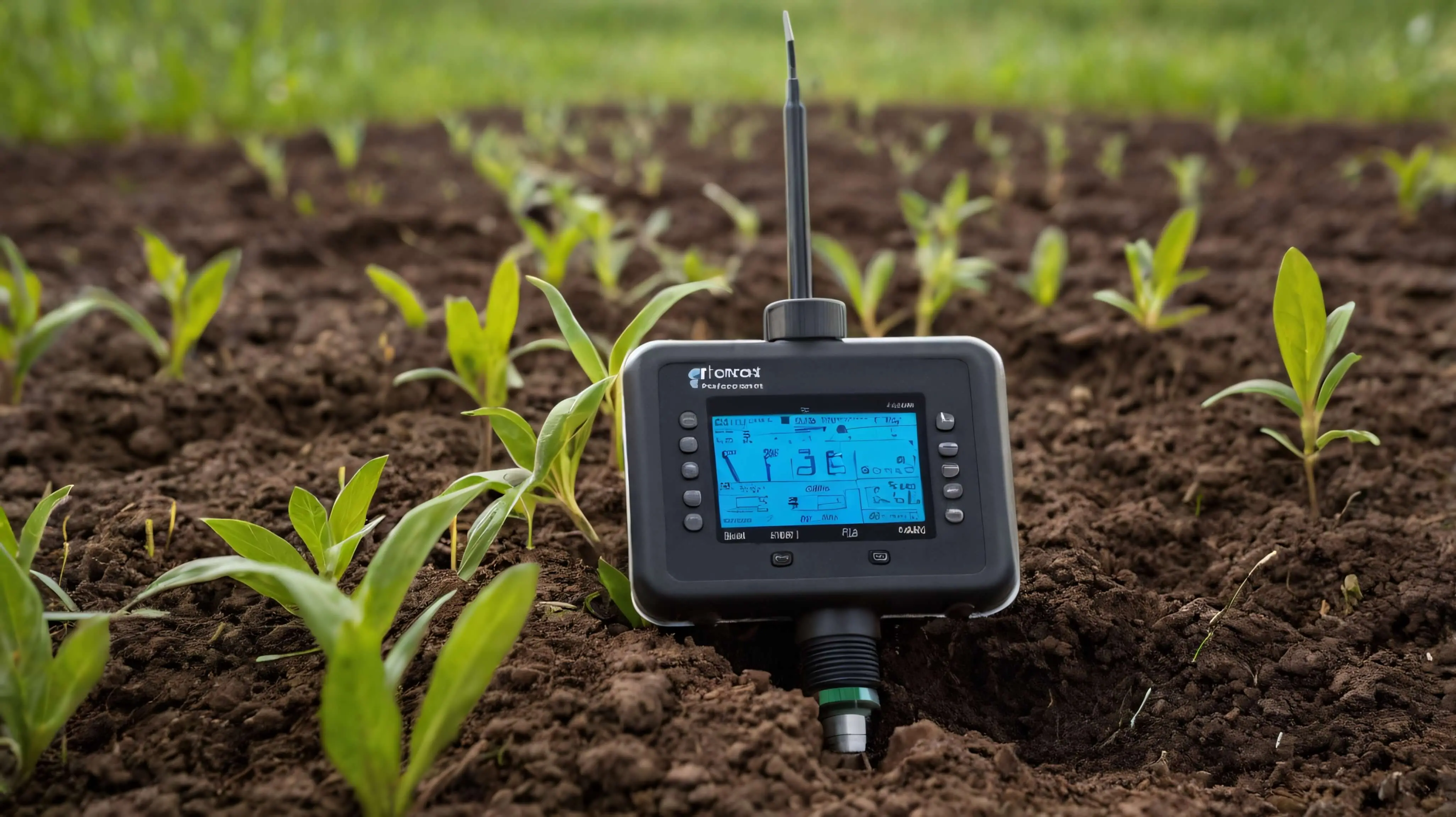
Benefits:
- Real-time data. Soil sensors can provide real-time information about soil moisture, temperature, and nutrient levels to help you adjust irrigation schedules and fertilizer applications for better outcomes.
- Optimized irrigation. By monitoring soil moisture levels, farmers can avoid over-irrigation, which can lead to water waste and nutrient leaching.
- Improved crop management and health. Drone-based imaging can help detect crop stress, diseases, and nutrient deficiencies early on and let farmers take corrective action before huge damage occurs.
- Yield prediction. Data collected from monitoring systems can be used to predict crop yields and help farmers plan their harvests more accurately.
Variable Rate Technology (VRT)
This farming technique allows farmers to apply different amounts of inputs (seeds, fertilizers, or pesticides) to different areas of their fields according to their specific conditions.
For example, let’s assume you have a large field with varying soil fertility. Using variable rate technology (VRT), you can create a map of the field that shows the nutrient levels in different areas. You can then program the fertilizer applicator to apply more fertilizer to areas with low nutrient levels and vice versa. All this is possible due to the GPS receiver technology and specialized equipment (variable-rate spreaders, yield monitors, and others) that manage the application rate as needed.
Benefits:
- Improved efficiency. Optimized resource use allows farmers to manage their fields with pinpoint accuracy and reduce waste and labor while increasing productivity.
- Environmental benefits. By minimizing waste, reducing the use of chemicals, and conserving water, precision farming helps protect the environment and promote sustainable agriculture.
- Cost savings. Targeted application of resources minimizes waste, which cuts costs in water, fertilizers, pesticides, and fuel, all while maintaining crop quality.
- Better yields. Farmers can closely monitor and respond to crop needs to produce healthier plants and consistently higher yields, even in challenging conditions.
Remote Sensing and Satellite Imagery
These precision agriculture technologies offer an overhead view of your crops to show what’s really going on in your fields. Satellites capture high-resolution images of fields, highlighting crop status, growth, vigor, and uniformity, while drones offer more detailed and localized views of crops. So, how exactly can you use robotic drones and satellite signals on your farm?
Benefits:
- Detect early signs of plant stress. Since you’ll be able to monitor crop color and vigor, you can identify early signs of nutrient deficiencies, pests, or diseases.
- Monitor field conditions. Due to drones, soil moisture, weed pressure, and similar factors are always under surveillance.
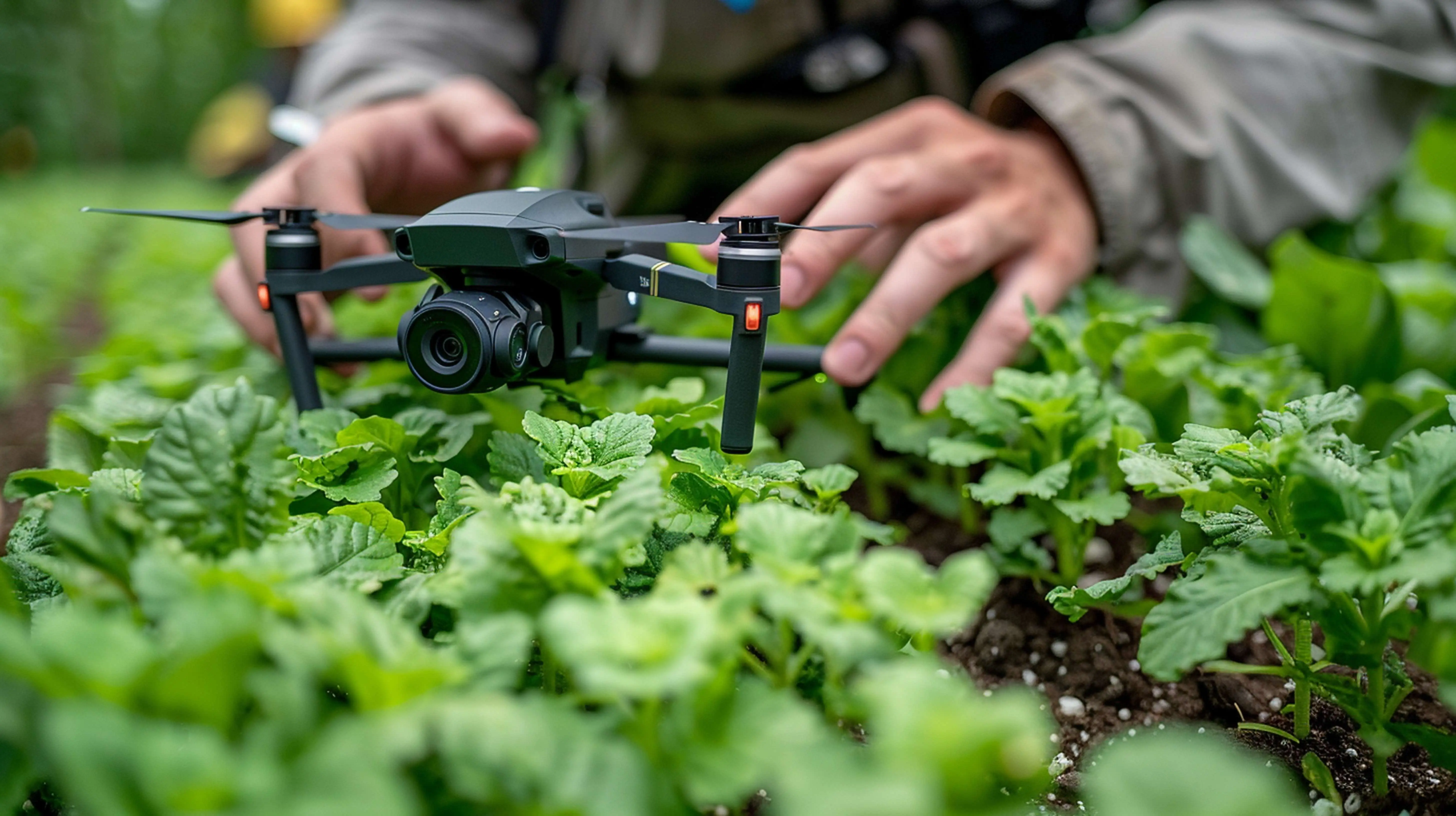
One of the biggest advantages of remote sensing is the ability to spot issues early. For example, if a section of the field shows signs of nutrient deficiency or a pest infestation, drones or satellite images can pick it up before it becomes a major problem. This gives farmers the chance to take quick, targeted actions to prevent small problems from becoming big headaches.
Farm Management Software and Data Analytics
Farm management software is an end-to-end tool that helps farmers track and handle a lot of operations, from crop yields and equipment maintenance to harvest data and beyond. No wonder they come with a number of features (real-time data collection, crop and temperature monitoring, financial tracking, and even team coordination) that facilitate the management of both the day-to-day tasks and long-term goals of running a farm. In other words, farm management software is a foundational tool that no single modern farm can do without.
Benefits:
- Centralized operations management. Streamlines all farm activities, from crop planning to financial tracking, into one platform.
- Real-time data insights. Provides up-to-the-minute data on crops, equipment, and weather conditions, allowing farmers to make the right decision.
- Improved resource allocation. Optimizes the use of water, labor, and machinery, helping farmers reduce waste and increase operational efficiency.
- Enhanced financial management. Tracks expenses, income, and profitability with ease and gives farmers better control over their financial performance and long-term planning.
Image title: Key features a good farm management software should have
- Data storage and management
- Data analytics
- Mapping and visualization
- Yield prediction
- Resource management
Data analytics is one of the features most farm management systems have, and it’s critical. Considering how much information an average farm collects from different sensors, devices, and applications, making sense of it all is what makes the data valuable. So, data analysis helps you make yield predictions years ahead, better manage resources, and recognize trends that could impact future crops.
Benefits of Implementing Precision Farming Solutions
From our review, you could already realize at this point that precision agriculture technology is rather an advantageous and strategic investment. And it’s indeed so. Want to see the benefits of precision agriculture? Here are just a few of them.
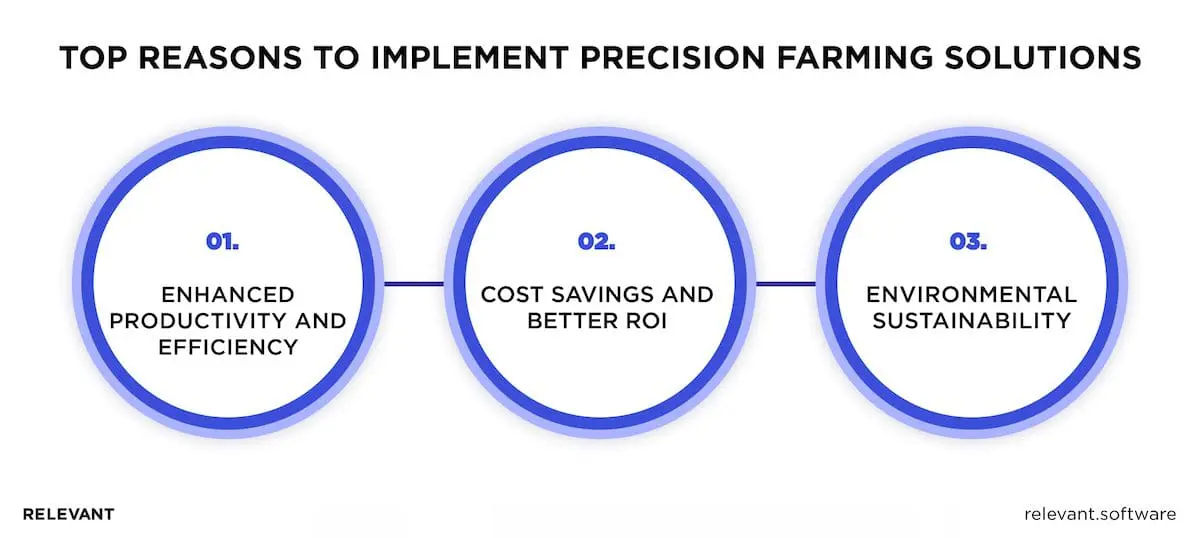
Enhanced Productivity and Efficiency
Knowing the health of your plants at a granular level is the most efficient way to reduce input costs, all while improving yields. Thanks to precision farming solutions, you can achieve these goals. The Environmental Benefits of Precision Agriculture study revealed farmers who embraced precision technologies reaped a 4% increase in crop production.
Pinpointing exactly where vegetation is weak within a field, you can hydrate those specific areas and, at the same time, avoid over-watering parts of the field where the crops are already thriving. Similarly, precision technologies help you calculate the exact amount of fertilizers and pesticides you need for spraying. The bottom line is healthier crops and higher yields without resource waste.
Cost Savings and Better ROI
Implementing precision farming solutions may require an upfront investment unless you use compatible equipment (GPS tractors or smart irrigation systems). Yet, even if not, and you have to put money into new sensors or software, the long-term cost savings are well worth it. Think about it: lower water consumption and fertilizer usage can save you a lot of money. Coupled with higher crop outputs, you get a stronger return on investment (ROI). Take the case of a farm in Central Illinois that saved $67 per acre thanks to the adoption of precision farming practices. The math is simple—less spent on resources, more gained in production.
Environmental Sustainability
Perhaps the most heartening benefit of precision farming solutions is their contribution to sustainable agriculture. The study found that farmers who adopted this technology have seen a 9% decrease in herbicide and pesticide application, along with lower fossil fuel emissions by 6%. Fewer chemicals running off into water supplies, less energy wasted, and a reduction in greenhouse gas emissions all contribute to a greener approach to farming that benefits farmers and the planet.
Challenges in Adopting Precision Farming Solutions
As promising as precision farming solutions are, adopting them may pose some hurdles. Below, we review the most common challenges in detail and give recommendations on how to overcome them.
High Initial Costs and ROI Concerns
We’ve already touched on the topic of relatively high initial costs. Indeed, GPS-compatible equipment, sensors, and software come at a price. Add to this the costs of installation, configuration, and maintenance. For mid-sized and small farms, this can be a heavy expense, especially when there’s uncertainty around the return on investment (ROI). Factors such as the scale of the operation, the specific crops grown, and the effectiveness of the implementation will influence the payback period.
What Relevant experts recommend to do
- Start small. Begin by implementing precision farming solutions on a smaller scale to assess their effectiveness and minimize upfront costs.
- Prioritize high-impact areas. Determine the areas where precision farming can deliver the most significant benefits, such as fields with variable soil characteristics or crops that are particularly susceptible to pests or diseases.
- Consider leasing options. Explore leasing options for equipment or software to reduce upfront costs and spread payments over time.
- Seek government incentives. Take advantage of government programs and incentives that may be available to support the adoption of precision technologies.
Data Integration and Management
Precision farming solutions generate a lot of information from multiple devices, sensors, and weather stations. Yet, managing and analyzing it is not a small feat. First, processing large amounts of data requires advanced computing power and specialized software capable of handling high-volume, real-time data streams. Second, the data from those sources usually have different formats, which makes it difficult to integrate and interpret without expert data management. So what can you do about it?
What Relevant experts recommend to do
- Invest in data management solutions to be able to handle large datasets and facilitate data analysis.
- Develop data governance policies that will outline how data should be collected, stored, and shared.
- Partner with technology providers to develop customized solutions that address specific data management needs.
Skill Gaps and Training Needs
Technology can be intimidating for those industry veterans who have spent decades in traditional farming practices. The use of precision technologies doesn’t require knowledge of quantum mechanics. Still, it demands some technical background and may become a large barrier for many farmers and workers. That’s why employee education in the form of training programs, workshops, or support services is important and will encourage faster solution adoption.
What Relevant experts recommend to do
- Identify training needs. Conduct assessments to identify the specific skills and knowledge gaps among farmers and farm managers to create relevant training programs that meet their needs.
- Provide incentives. Offer incentives or subsidies to encourage farmers to participate in training programs. This can help overcome financial barriers and make training more accessible.
- Establish a supportive environment. Create a culture of continuous learning and innovation within the agricultural community. Encourage farmers to share their experiences and best practices with one another.
Trends in Precision Farming Solutions
In addition to adopting precision farming solutions, governments in agriculture-driven economies and forward-thinking agribusinesses pour resources into more advanced technologies to make their practices even smarter. We made a short list of the most impactful innovations that become more and more commonplace on large farms.
AI and Machine Learning in Precision Agriculture
These are popular technologies widely applied in different industries. Their value lies in their ability to process huge sets of data and recognize trends that a human would unlikely to notice. Using the information collected from your fields, AI in agriculture can suggest optimal planting times, better irrigation schedules, and fertilizer application rates.
Another power of artificial intelligence is predictions. It can predict the likelihood of pest outbreaks or nutrient deficiencies based on the given information about your farm’s specific conditions. In other words, it supercharges your data analytical capabilities. What’s more, AI also powers the development of farming equipment, like self-driving tractors and robotic harvesters, to make them autonomous and capable of making decisions.
Related: How the IoT and AI Are Impacting the Agriculture
Blockchain for Traceability and Transparency
Blockchain technology, which became known due to cryptocurrencies, is now actively embraced by the agricultural industry for its secure data management capabilities. In simple terms, blockchain is a very secure ledger that records transactions in a way that makes them impossible to change. Storing information on growing practices, fertilizer use, transportation, and other details, your consumers can easily trace the origin of the food production, from farm to fork, which builds trust. We can say that it’s like a digital passport for every food item.
On top of that, blockchain streamlines food safety protocols as it creates an immutable record (which is impossible to alter or delete) of each stage of a product’s journey. This helps pinpoint potential sources of contamination and facilitates faster recalls when necessary, all while ensuring the safety of consumers.
Expansion of IoT and 5G in Agriculture
The IoT (Internet of Things) technology has already proved its value for farms. All kinds of sensors, drones, smart irrigation systems, and monitoring devices are all applications of IoT in agriculture. Due to IoT, agribusinesses can have instant access to field conditions in real-time and make the right decisions based on up-to-date information. Since IoT technology plays such a critical role in growing plants more efficiently and productively, we can safely say that its adoption will only increase with time.
5G wireless connectivity also firmly expands. In the first quarter of 2024, the adoption of 5G approached 2 billion connections, with predictions to hit 7.7 billion by 2028. Why does it matter? Because 5G networks offer faster data transmission speeds and lower latency compared to LTE, which is a complete game-changer for IoT-driven farms. With the availability of 5G, farmers can receive real-time updates from their IoT devices with minimal delay, which leads to quicker responses to changing field conditions and faster data analysis.
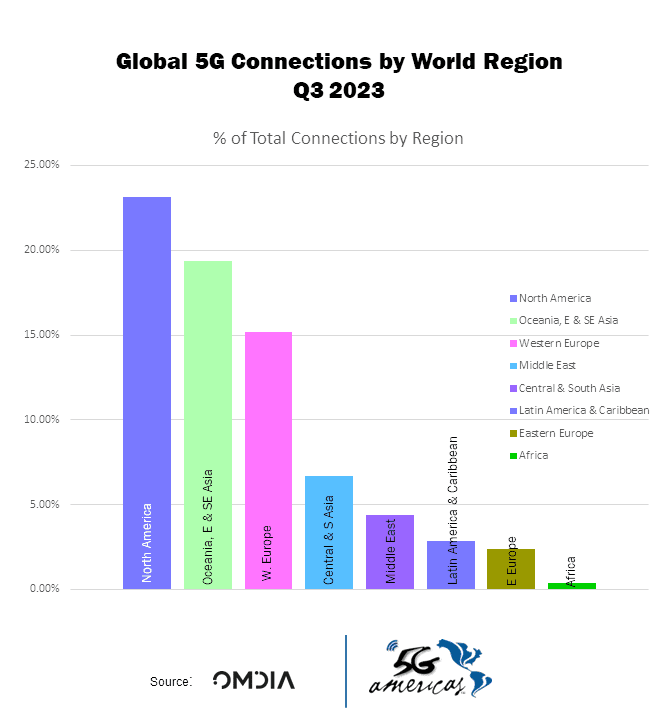
Source: 5gamericas
Our Agritech Case Study
Agriculture is one of the industries we develop solutions for because, first, we have deep knowledge of IoT and data analytics, and second, we know the specific challenges farmers face today. To prove that, we want to briefly show you how the farming tech solutions we built can make a difference based on the example of our client’s success story.
React Native Barcode App Creation
Wish Farms, a top berry supplier in the US, partnered with Relevant Software to create a mobile app that would streamline their berry picking and packing operations.
Our team selected React Native because it offers the perfect balance of performance and flexibility and is well-suited for this project. Designed to function flawlessly in any climate, our app was built with berry pickers in mind. Even with gloved hands and under extreme weather conditions, the app usage was not just possible but seamless. From a technical standpoint, we engineered the app to handle a huge number of barcode scans per minute, ensuring a smooth and efficient workflow.
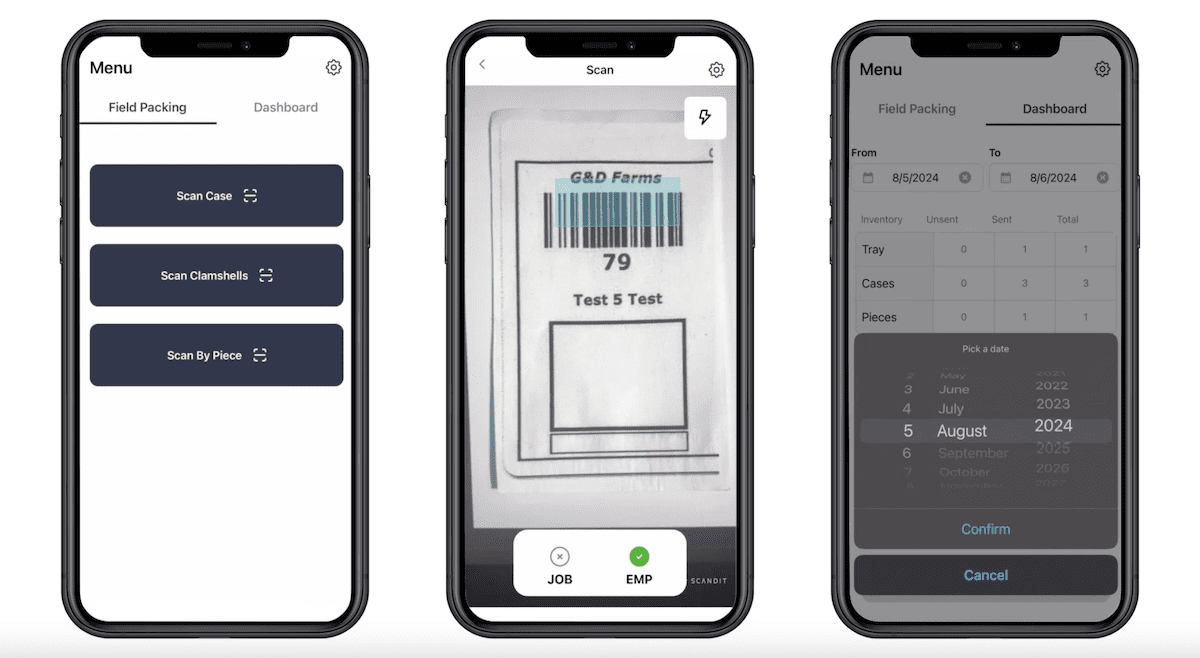
The solution we delivered simplified berry collection and allowed users to monitor their harvest at every stage. Our designers ensured the app remained user-friendly, even under the harshest conditions.
How can Relevant Help Grow your Farming Business?
The wise farmer knows that the earth is a living thing and that it must be treated with respect. This ancient proverb holds true today more than ever. Precision farming solutions are a technology-driven way to nurture the land, optimize resources, and ensure a sustainable future for your farm. Frankly speaking, having the right tools in your cultivation toolkit today is the difference between simply getting by and truly thriving.
If you’re ready to walk away from outdated farming methods and stop relying on guesswork in favor of more efficient solutions, Relevant is always there to support you. In addition to specialized agriculture software development services, we can build IoT products and AI-driven software systems. We’ll designate you a team of UX/UI designers, developers, and QA specialists who will help you implement your ideas to life.
If you want to plant the seeds of innovation in your farming business, let’s talk. With Relevant by your side, you’ll have the tools, technology, and insights to cultivate a brighter, more productive future. Contact us for consultation.



